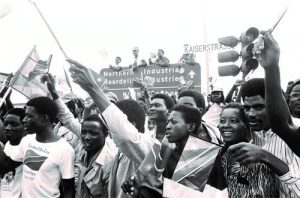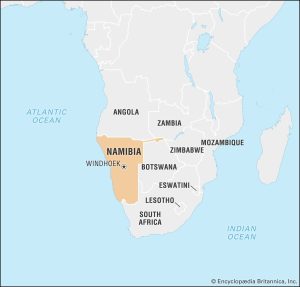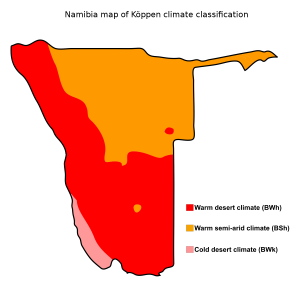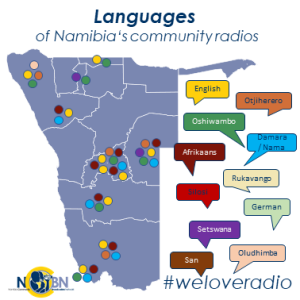History of Namibia
Namibia, located in southern Africa, has a rich history that spans back thousands of years. The earliest inhabitants of Namibia were the San people, who lived as hunter-gatherers in the region for thousands of years before the arrival of Bantu-speaking groups in the 14th century (Kallie Szczepanski, 2021). The Bantu-speaking groups, which included the Herero and Himba, settled in the region and established a number of kingdoms and chiefdoms.
In the late 19th century, Namibia became a German colony, known as German South-West Africa, after a treaty was signed with local chiefs in 1884 (Kallie Szczepanski, 2021). During this period, the German colonial government seized land and resources from the indigenous population, and there were a number of uprisings against colonial rule. One of the most significant uprisings was the Herero and Namaqua genocide, which took place between 1904 and 1908, and resulted in the deaths of tens of thousands of people (Kirsten McKenzie, 2018).
Namibia was placed under South African administration after World War I, when Germany lost control of its colonies. South Africa implemented a system of racial segregation, known as apartheid, in Namibia, which had a devastating impact on the indigenous population. The South African government also established a number of bantustans, or homelands, in Namibia, which were intended to be independent states for black Namibians, but were widely regarded as a tool of apartheid oppression.
In 1966, a guerrilla group known as the South West Africa People’s Organization (SWAPO) was formed, with the goal of gaining independence for Namibia. SWAPO launched a guerrilla war against the South African government, and the conflict lasted for more than two decades, with many Namibians being killed or displaced (Peter Polack, 2019). In 1988, a peace agreement was signed, and Namibia gained independence the following year.
Since independence, Namibia has faced a number of challenges, including high levels of inequality, unemployment, and poverty. The government has also faced criticism for its handling of land reform, with many indigenous Namibians continuing to live in poverty and without access to land.
In conclusion, Namibia’s history is complex and has been marked by periods of colonial rule and apartheid oppression. The country has made significant strides since gaining independence, but continues to face a number of challenges.

Location
Namibia is a country located in southern Africa, bordering the South Atlantic Ocean to the west, Angola to the north, Zambia to the northeast, Botswana to the east, South Africa to the southeast, and the Republic of South Africa (RSA) to the south. (CIA, 2022) Namibia has a total area of 825,418 square kilometers and is the 34th largest country in the world. (World Bank, 2022)
According to the Central Intelligence Agency (CIA) (2022), Namibia is located at 22 00 S, 17 00 E. The country’s capital, Windhoek, is located at 22°34′12″S 17°05′12″E. The country is located in the southern hemisphere, and its time zone is GMT+2. (Time and Date, 2022)
Namibia’s location in southern Africa gives it access to the South Atlantic Ocean, making it an important center for fishing and shipping. The country’s central location in the region also makes it an important hub for transportation and trade. (Nations Encyclopedia, 2022)
In conclusion, Namibia is located in southern Africa, bordering the South Atlantic Ocean to the west, Angola to the north, Zambia to the northeast, Botswana to the east, South Africa to the southeast, and the Republic of South Africa (RSA) to the south. (CIA, 2022) Its capital, Windhoek, is located at 22°34′12″S 17°05′12″E, and it has a total area of 825,418 square kilometers. (World Bank, 2022)

Climate
Namibia is a country located in Southern Africa with a varied climate that is mostly arid or semi-arid. The country has a complex topography that includes highlands, plateaus, and deserts, which have an impact on the climate. According to the Köppen climate classification, the climate in Namibia is mainly categorized as desert or steppe climate (Kotze, 2016).
The western and coastal regions of Namibia have a desert climate, characterized by low rainfall, high temperatures, and low humidity. The coastal region is affected by the cold Benguela Current, which results in low air temperatures, dense fog, and low precipitation. The interior regions of Namibia have a semi-arid climate, with less extreme temperatures and slightly higher rainfall than the coastal regions.
The rainfall in Namibia is highly variable, and the country is prone to droughts. The rainy season occurs between October and April, with the highest rainfall occurring between December and February. However, the amount and distribution of rainfall vary greatly from year to year and from region to region. The northern regions of Namibia receive the highest amount of rainfall, with an average of 600-700 mm per year, while the southern regions receive the least amount of rainfall, with an average of 50-100 mm per year (Mendelsohn et al., 2000).
The climate in Namibia has a significant impact on the country’s economy and society. The arid and semi-arid conditions limit agricultural activities, and the reliance on rain-fed agriculture makes the country highly vulnerable to droughts. The variability of rainfall also affects wildlife populations, as the availability of water determines their distribution and abundance. In addition, the climate has an impact on tourism, as the weather conditions influence visitors’ decisions to visit certain regions of the country.
In conclusion, Namibia’s climate is mainly characterized by arid and semi-arid conditions, with highly variable rainfall and high temperatures. The country’s complex topography, including highlands, plateaus, and deserts, plays a significant role in shaping the climate. The climate has an impact on various aspects of the country’s economy and society, including agriculture, wildlife, and tourism.

Languages
Namibia is a country located in Southern Africa that has a diverse population of over 2.5 million people. The official language of Namibia is English, but there are also several other languages spoken throughout the country due to its varied ethnic groups and cultural history.
One of the most widely spoken languages in Namibia is Oshiwambo, which is spoken by over 40% of the population (CIA World Factbook, 2022). Oshiwambo is a Bantu language that is spoken by several different ethnic groups in northern Namibia, including the Aawambo, Ovakwanyama, and Ovambanderu. The language has a rich oral tradition and is often used in storytelling and music. In recent years, there has been a movement to standardize the written form of Oshiwambo, which has resulted in the development of several orthographies, including the Oshindonga and Oshikwanyama orthographies (Kamwi, 2016).
Another important language in Namibia is Herero, which is spoken by over 7% of the population (CIA World Factbook, 2022). Herero is a Bantu language that is spoken primarily in central and eastern Namibia, as well as in parts of Botswana and Angola. The language has a rich cultural history and is known for its complex noun class system. During Namibia’s colonial period, the Herero people were subjected to genocide by German colonial forces, which had a significant impact on the language and its speakers (Koerner, 2018).
Afrikaans is also a widely spoken language in Namibia, with over 10% of the population speaking it as a first language (CIA World Factbook, 2022). Afrikaans is a West Germanic language that developed in South Africa during the colonial period and is spoken by many white Namibians as well as some mixed-race and black Namibians. The language has a complex history and is often associated with apartheid and the oppression of black South Africans. However, many Namibians continue to speak Afrikaans as a first or second language, and it is an important language in Namibia’s business and academic sectors (Möhlig, 2018).
Other languages spoken in Namibia include Damara/Nama, which is spoken by over 7% of the population, and Kavango, which is spoken by over 9% of the population (CIA World Factbook, 2022). Both languages are Bantu languages that are spoken in different parts of Namibia and have their own unique cultural and linguistic features.
In conclusion, Namibia is a linguistically diverse country with several different languages spoken throughout its population. These languages reflect the country’s varied ethnic groups and cultural history, and they continue to play an important role in Namibian society today.





